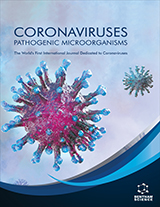Abstract
Despite several infectious diseases which have been eradicated or controlled worldwide nowadays, there are still some infectious diseases such as AIDS, caused by HIV, which are supposed to be a serious social health problem and demand the search for new vaccines. A classical approach for generation of vaccines against infection was initially based on the use of killed or attenuated pathogens. With the increase of information about mechanisms governing immune responses after microorganism infection, new approaches have been investigated. The use of dendritic cells (DCs) pulsed with whole pathogen organisms has been considered and explored; however, this approach still presents serious concerns about safety issues. This fact has conducted to a “non-classical” approach where well defined antigens with complete control of molecular design are used. Two strategies are generally envisaged. One is based on the direct stimulation of T and B-cells using immunogenic peptides for producing antibodies and the other one is based on the use of antigen-pulsed dendritic cells producing both cellular and humoral response. This review will be focused on the state of the art of these new approaches for vaccine development to infectious diseases. Synthetic strategies, technical problems, and applications of multivalent dendritic systems will be described and commented. This is a topic of enormous interest which could open interesting alternatives and expectancy in infectious diseases for the development of effective therapies.
Keywords: Dendritic Compounds, Vaccine Development, Immune Response, Modulators, infectious diseases, AIDS, HIV, T and B-cells, immunogenic peptides
 13
13





















